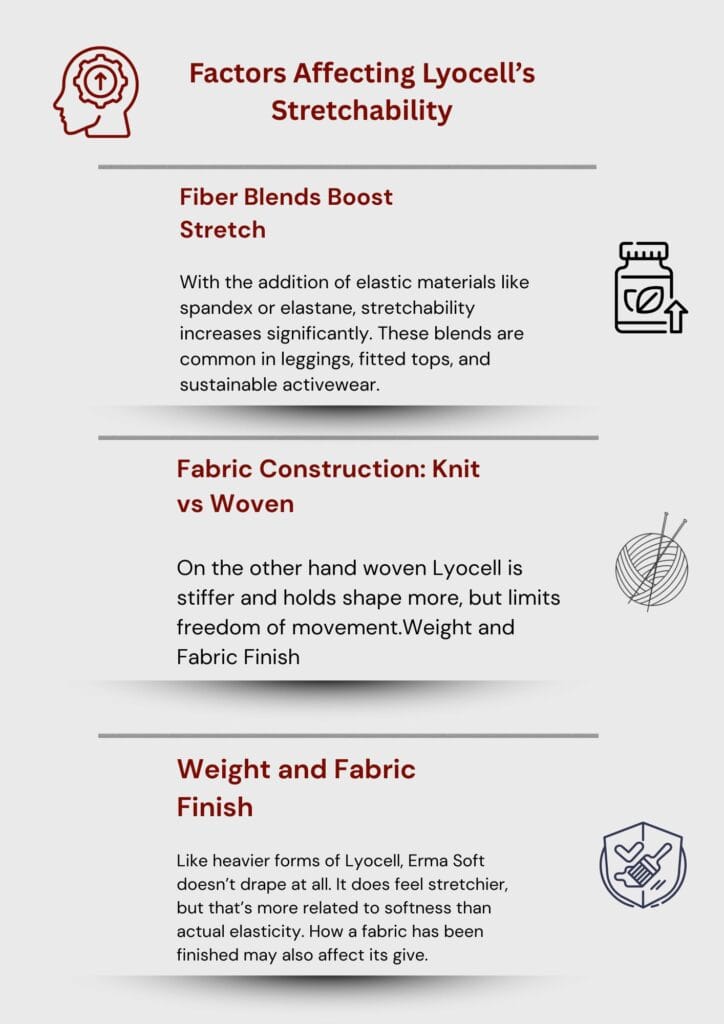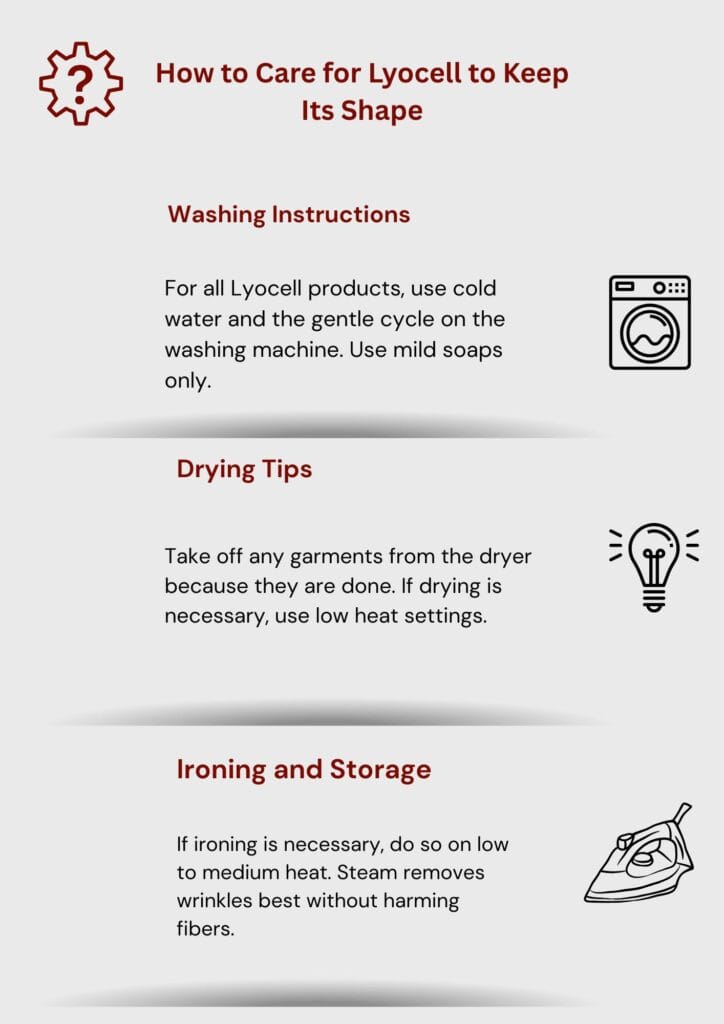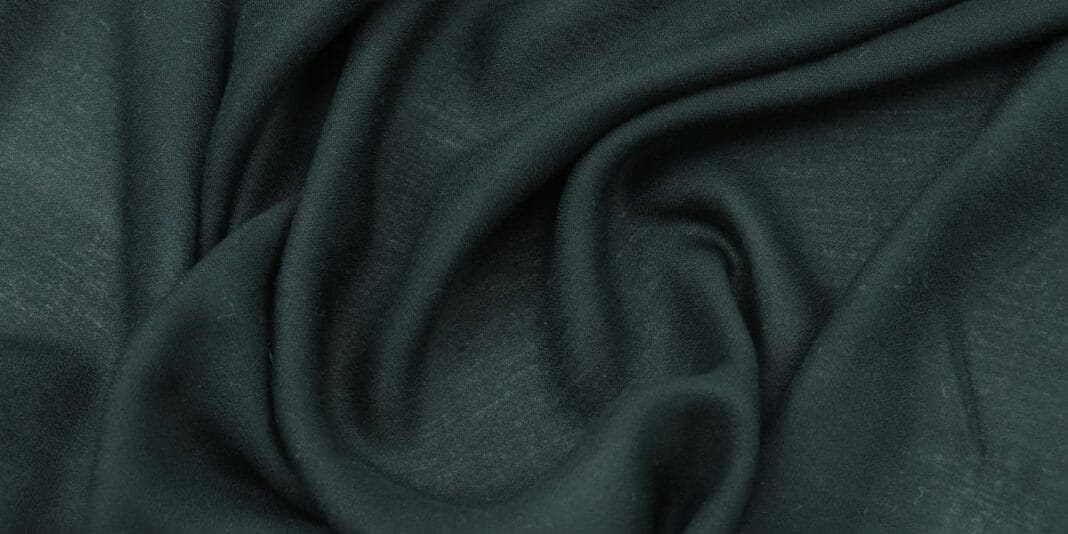Introduction
Lyocell fabric is new in the textile market and is being adopted for its soft feel and production style. Most commonly made from eucalyptus wood pulp, it is related to modal and viscose, but differs in its strength, breathability, and moisture-wicking properties. Lyocell is popular for its smooth texture and environmental advantages, and is used in garments as well as bedding.does lyocell stretch
This question is especially important for shoppers considering the fact that stretch impacts comfort, fit, and the garment’s longevity. Whether it’s a flowy dress or activewear, knowing how Lyocell behaves helps you make smarter decisions.
Let’s look into how Lyocell stretches and how it stands in comparison to market alternatives.
Does Lyocell Stretch Naturally?
Lyocell’s Inherent Fiber Structure
Lyocell comes from the cellulose fibers found in wood pulp and is extracted using a closed looped system, which makes it sustainable and low in environmental impact. Unlike fully synthetic fibers, such as polyester or nylon, lyocell is not fully distanced from its natural origins.
Although Lyocell soft is a breathable fabric, it has a low level of natural stretch. It has strong molecular properties that hinder elasticity. Lyocell lags behind materials like spandex and elastane when it comes to natural give.
Comparison With Other Fabrics
When considering stretch abilities Lyocell has less natural give than modal or cotton. A fabric’s natural give may be more pronounced like cotton due to looser weaves and knits. Rayon and polyester have more synthetical elasticity so they tend to stretch more. Also, Lyocell is more stable than spandex because it doesn’t “bounce back”. Therefore, if Lyocell is not blended with other fabrics, do not expect form-fitting stretch.
Factors Affecting Lyocell’s Stretchability

Fiber Blends Boost Stretch
With the addition of elastic materials like spandex or elastane, stretchability increases significantly. These blends are common in leggings, fitted tops, and sustainable activewear. For instance a blend of 95% Lyocell and 5% Elastane creates significant comfort and flexibility for the wearer.
Fabric Construction: Knit vs Woven
Knit fabrics tend to be more forgiving than woven fabrics. Knit Lyocell will feel more relaxed and forgiving making it better for casual wear. On the other hand woven Lyocell is stiffer and holds shape more, but limits freedom of movement.Weight and Fabric Finish
Weight and Fabric Finish
Like heavier forms of Lyocell, Erma Soft doesn’t drape at all. It does feel stretchier, but that’s more related to softness than actual elasticity. How a fabric has been finished may also affect its give.
Does Lyocell Stretch Over Time?
Natural Wear and Tear
In time, Lyocell may have some relaxation, especially with stress around knee or elbow area. Unlike some cottons, or rayons, it doesn’t lose shape very much which gives lyocell the edge in structure.
Washing and Maintenance
Rough washing may lead to some stretching and shrinking. Hot water washes or high tumble drying may lead to almost any garment losing structure. Following care instructions is especially important for blended garments; otherwise, damage to the elasticity can result.
How to Make Lyocell Garments More Stretchy
Choose Blended Fabrics
Look for garments called Lyocell-Spandex blends. Even a small percentage of stretch fiber goes a long way. These blends offer comfort and sustainability while providing flexibility for daily wear.
Prefer Knit Over Woven
For those who need stretch, knit Lyocell is preferred over woven. Ask anyone who is seasoned in the field, knit construction offers stretch without affecting fabric softness and airiness.
How to Maintain Lyocell Stretch
Stores might not sell preshrunk garments of Lyocell, but washing them in cold water with a gentle cycle avoids adding heat while drying. Using high temperature will ruin and destroy the shape and stretchability of the fabric irrevocably. During al drying, the shape and elasticity is preserved when blends are fabric aired. Mild detergents aids preservation of the fibers while avoiding bleach aids in maintaining the structural integrity of the elastic materials and springs used in construction.
Pros and Cons of Lyocell’s Stretch (or Lack Thereof)
Benefits of Lyocell
- Allows airflow as well as soaking up sweat to keep you cool and dry.
- Feels soft to your skin ensuring you are comfortable.
- Environmentally friendly as it is made through a closed loop sustainable system.
- Hangs elegantly which is great for casual or fancy looks.
- Stronger than viscose or rayon and has greater long-term durability.
Drawbacks Connected to Stretch
- Limited natural stretch, especially with 100% Lyocell fabrics.
- May crease more than blends with synthetic fibers.
- Not suitable for form-fitting clothes without the addition of spandex or elastane.
Best Uses for Lyocell (Based on Stretch Properties)
Best Uses
Flowy dresses, blouses, and sleepwear are best suited for lyocell. Its soft texture and gentle drape makes lyocell a favorite for everyday wear. People also love lyocell bedding and sheets for their softness and breathability.
In sustainable activewear, lyocell performs well when blended with stretch fibers. It adds to the comfort of yoga pants and fitted tops, as well as eco-friendliness to athleisure wear.
Not as Effective
For tight-fitting athletic gear, 100% lyocell should not be used. It will not provide the necessary support without spandex added, so blended, knit versions are best for those uses.
Common Myths of Lyocell Stretch
Myth #1: “All Lyocell Stretches Like Modal”
Modal is naturally stretchier, so this is false. Because of the strength and structure of lyocell, it is less flexible. Unless blended, lyocell has very little stretch.
Myth #2: “Lyocell Will Stretch Out Like Cotton.”
Not quite. Cotton may bag out over time. Proper care allows lyocell to maintain shape far better than cotton because it has a tighter fiber structure.
Myth #3: “If It Feels Soft, It Must Be Stretchy”
Voids truth because lyocell feeling silky smooth does not mean it will stretch. Softness and stretch are two different qualities.
How to Care for Lyocell to Keep Its Shape

Washing Instructions
For all Lyocell products, use cold water and the gentle cycle on the washing machine. Use mild soaps only. Avoid detergents containing bleach or other strong chemicals as they damage the fibers in the long run.
Drying Tips
Take off any garments from the dryer because they are done. If drying is necessary, use low heat settings. Heat and friction cause unintentional stretching and shrinking.
Ironing and Storage
If ironing is necessary, do so on low to medium heat. Steam removes wrinkles best without harming fibers. Store in a cool dry area as it should not be hung to prevent stress on the fibers.
Conclusion
So, does Lyocell stretch? Not so much in its pure form. There is some natural elasticity, but with spandex blends or in knits, it becomes far more flexible and comfortable. Breathability, softness, and environmental impact often tilt the balance toward comfort for most users.
For athletic apparel, fitted tops, and other areas requiring stretch, lyocell blends are more suited. Otherwise, indulge yourself in lyocell’s remarkable qualities—it is a luxurious, gentle fabric on the skin and eco-friendly.
While stretch may be an important factor for you, don’t forget to check fabric labels. For the needed comfort, flexibility, and stretch make sure to select lyocell + elastane blends or knit lyocell.
FAQs
No. Particularly in knits, cotton will provide more natural stretch. Lyocell is stronger but less flexible.
Only a little bit. Some shape can be regained with gentle stretching if spandex blended but don’t expect much elasticity.
Lyocell can shrink slightly with high heat making avoiding hot water and dryers essential to keep original size. It does keep its shape better than many natural fibers when well cared for.


